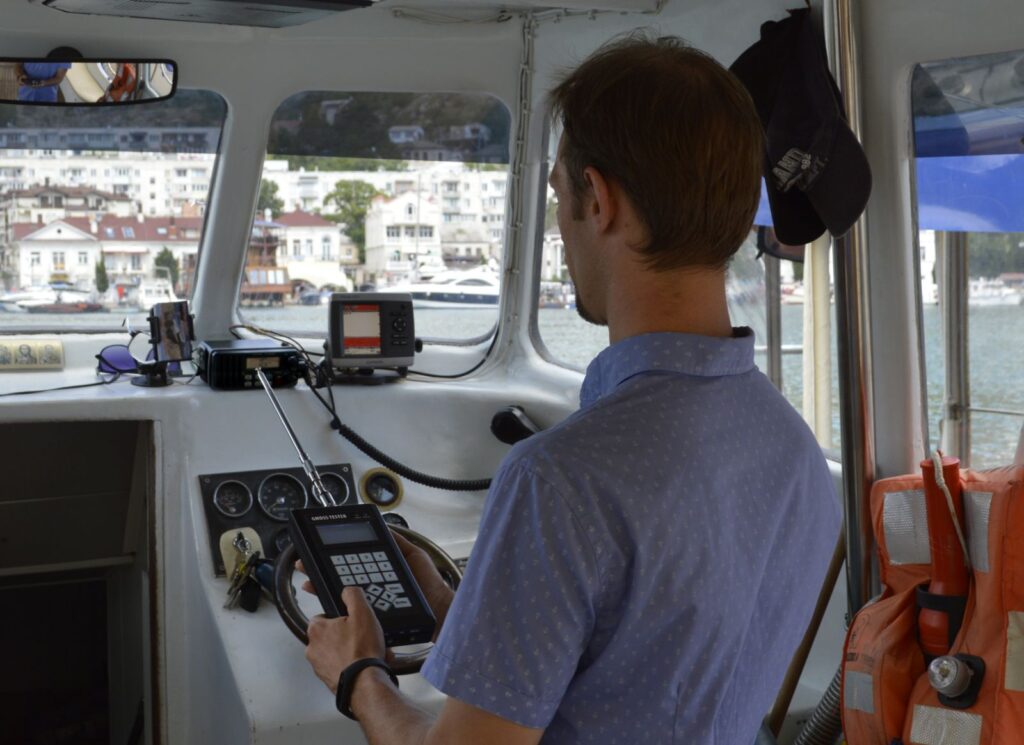GMDSS Equipment Reprogramming
Whether you are acquiring a new or pre-owned vessel, or if your vessel is undergoing changes such as name, MMSI, flag, or class, it is essential to reprogram all GMDSS equipment to reflect these new details in the equipment software.


With 16 years of experience, our class-certified engineers and technicians are proficient in reprogramming various makes and models of GMDSS equipment. We can attend to your vessel upon request to provide reprogramming services wherever needed.
After Programming:
- Testing and Certification: We ensure the equipment is thoroughly tested and certified.
- Update Details: The equipment will be updated with the new vessel information.

Contact Us
Ensure your INMARSAT-C and GMDSS equipment are correctly programmed and certified. Contact us today for reliable and efficient programming services!
FAQ about GMDSS (Global Maritime Distress and Safety System)
- What is GMDSS?
- GMDSS stands for Global Maritime Distress and Safety System, an internationally mandated system designed to ensure rapid and efficient alerting of maritime distress incidents and coordination of rescue operations.
- What are the key components of GMDSS?
- GMDSS includes various components such as distress alerting systems (EPIRBs, SARTs), radio communication systems (MF/HF, VHF, satellite), search and rescue coordination centers (RCCs), and maritime safety information services (MSI).
- Why was GMDSS implemented?
- GMDSS was implemented to improve maritime safety and facilitate distress communication by providing multiple communication options, automated distress alerting, and improved coordination of search and rescue operations.
- Who is required to comply with GMDSS regulations?
- GMDSS compliance is mandatory for all SOLAS (Safety of Life at Sea) vessels engaged in international voyages, including cargo ships, passenger ships, and high-speed craft.
- What types of distress alerting systems are used in GMDSS?
- Distress alerting systems in GMDSS include Emergency Position Indicating Radio Beacons (EPIRBs) for vessels, Personal Locator Beacons (PLBs) for individuals, and Search and Rescue Transponders (SARTs) for locating vessels or lifeboats.
- What role do satellite communication systems play in GMDSS?
- Satellite communication systems, such as Inmarsat, provide global coverage for distress alerting, allowing vessels to transmit distress calls and receive safety information regardless of their location.
- How do vessels communicate distress alerts in GMDSS?
- Vessels communicate distress alerts using radio communication systems, including MF/HF radiotelephony, VHF radiotelephony, and satellite communication terminals equipped with distress alerting capabilities.
- What frequencies are designated for distress communication in GMDSS?
- Distress communication frequencies in GMDSS include 2182 kHz (MF), Channel 16 (VHF), and specific satellite distress alerting frequencies allocated by satellite communication providers.
- Can GMDSS equipment be tested onboard vessels?
- Yes, GMDSS equipment must be regularly tested onboard vessels to ensure proper functioning. These tests include radio communication checks, EPIRB self-tests, and SART operational tests.
- What actions should vessels take upon receiving a distress alert in GMDSS?
- Vessels receiving distress alerts in GMDSS must immediately acknowledge receipt, provide assistance if possible, and report the distress to the nearest search and rescue authorities.
- What are the key elements of a GMDSS radio watchkeeping procedure?
- GMDSS radio watchkeeping involves continuously monitoring designated distress and safety communication frequencies, maintaining communication logs, and responding to distress alerts promptly.
- Is GMDSS equipment required to be inspected and certified?
- Yes, GMDSS equipment onboard vessels must be inspected and certified by authorized personnel to ensure compliance with regulatory requirements and proper functioning during emergencies.
- How does GMDSS contribute to maritime safety and security?
- GMDSS enhances maritime safety and security by providing reliable distress communication, improving response times to emergencies, and facilitating coordination of search and rescue operations.
- Are there any recent developments or updates in GMDSS regulations?
- Yes, GMDSS regulations are periodically updated by the International Maritime Organization (IMO) to incorporate advancements in technology and improve the effectiveness of distress communication and coordination.
- Where can vessel operators find resources and training on GMDSS compliance?
- Vessel operators can access GMDSS compliance resources, training programs, and guidance materials from maritime authorities, classification societies, and industry organizations to ensure adherence to regulations and best practices.
